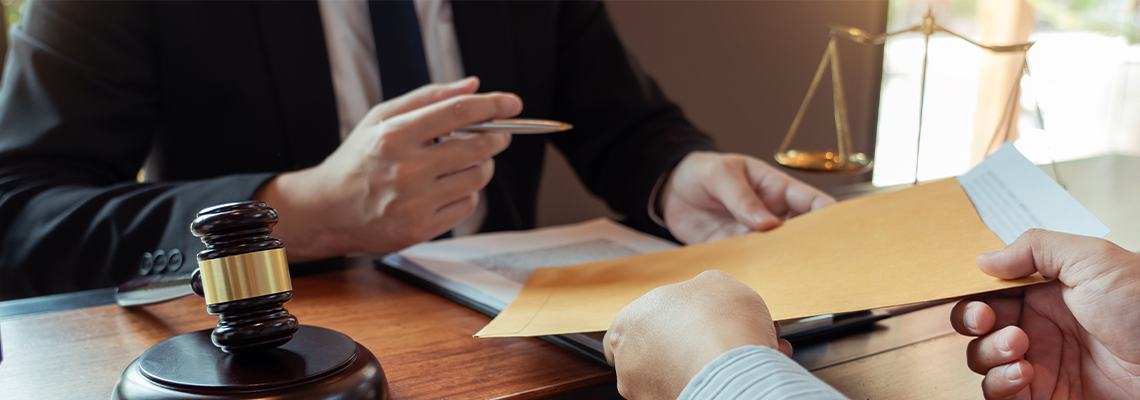
WHEN TO FILE A PROTECTIVE ORDER IN BUSINESS LITIGATION
A protective order in California can have two different meanings. It might refer to a restraining order to keep one individual away from another individual, and it also might refer to the process of discovery in civil litigation. In discovery, the protective order guards against excessive, unreasonable, or confidentiality-breaking requests by plaintiffs for disclosure of potential evidence.
A protective order is often sought by the defense counsel when the plaintiff’s attorneys are being over-zealous in the discovery process. The order allows the defendant to have the first shot at framing how the discovery process will unfold. Absent a protective order, the plaintiff’s counsel can request a meet and confer, and if that fails, ask the judge to compel the disclosure of information being sought. This puts the odds of success on the plaintiff’s side in the discovery process.
If you are involved in business litigation in or around San Francisco, including Oakland, San Jose, San Mateo, Santa Clara, or throughout Alameda County, California and you are either seeking or being subjected to a protective order, contact the Law Offices of David H. Schwartz, INC. With 45 years of experience in business litigation, representing both plaintiffs and defendants, attorney David H. Schwartz has the knowledge and resources to provide solid legal counsel and direction.
Protective Orders in Business Litigation
The California Code of Civil Procedure, Sections 2030.010 through 2030.090 and Section 2031.061, among others, requires the court “to protect any party or other person from unwarranted annoyance, embarrassment, or oppression, or undue burden and expense” in face of a demand for the “inspection, copying, testing, or sampling of documents, tangible things, places, or electronically stored information” or for any interrogatories (questions) directed against individuals or business entities.
A protective order can be sought to:
Exclude certain items or categories of items listed in a discovery demand
Require that the method of discovery be an oral disposition instead of interrogatories to a third party
Extend the time frame for the discovery process
Move the site for producing the discovery items
Specify terms and conditions for inspecting, copying, testing, or sampling of the discovery items
Limit or preclude the disclosure of confidential research or a trade secret
Demand that the items produced be sealed and allowed to be open only by order of the court
The code also requires of the court that: “If the motion for a protective order is denied in whole or in part, the court may order that the party provide or permit the discovery against which protection was sought on terms and conditions that are just.”
Unless the protective order was deemed to have been sought “with substantial justification,” the court may choose to impose monetary sanctions on the requesting party.
Justification and Timeliness of a Protective Order
The code lists reasons for a protective order as being “unwarranted annoyance, embarrassment, or oppression, or undue burden and expense.” Sometimes, the plaintiffs in a civil lawsuit will present a list of what are called interrogatories — or requests for answers to questions that may lead to the disclosure of pertinent evidence — that is so broad and burdensome that it falls into one of those categories for justifying a motion for a protective order.
The initial window for answering a request for interrogatories is 30 days, so a protective order must be sought early on in the legal proceedings.
Under Code Section 2016.40, however, the motion for a protective order must be accompanied by a meet and confer declaration. Meet and confer refers to a gathering of plaintiff and defense counsel to attempt to resolve differences relating to the discovery process and the demand for interrogatories and documents.
Who and What Are Protected?
Section 2020.090 declares that “the responding party, and any other party or affected natural person” can be subject to a protective order when presented with interrogatories by the plaintiff. The code also cites “documents, tangible things, places, or electronically stored information” under Section 2031.061.
In other words, both the people involved in the case and whatever else that can lead to admissible evidence, including documents and electronically stored data, can be sought by the plaintiff’s counsel, and likewise can be the subject of a motion for a protective order by the defense.
Experienced Legal Guidance You Can Rely On
A motion for a protective order can aid the defense by limiting the scope of the discovery process, but it can also lead to sanctions if it is deemed unwarranted or even frivolous. The plaintiff’s counsel is no doubt going to fight any protective order motion, and the resulting hearing on the motion can become quite heated. A meet and confer, if successful, might be a satisfactory alternative.
Regardless of which side you’re on in business litigation — plaintiff or defendant — the Law Offices of David H. Schwartz, INC. stands ready to provide solid legal counsel and represent you vigorously in court. If you’re located in the greater San Francisco Bay Area, or in the neighboring Alameda County areas of Oakland, San Jose, San Mateo, or Santa Clara, call immediately if business litigation looms on the horizon.
